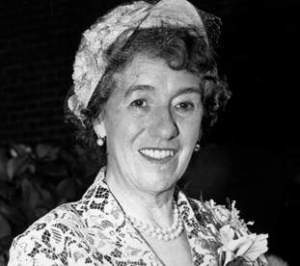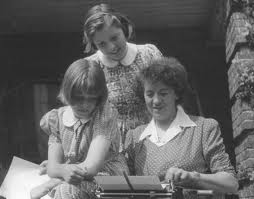Inspiration and Us – Can a time inspire us?
Loony Literature thrives on inspiring others. We like to share our experiences with you, in the hope that, in turn, you might also be inspired to write something of your own. We like to use Literature as a springboard for our own creations, this does not mean that it always has to be fiction that we write. Literature can inspire articles too. In this post we go off on a creative tangent. We hope you enjoy the journey and feel compelled to do something yourself after reading this.
At the moment we are working on a play inspired by Mary Shelley’s Frankenstein. I have been intrigued by Mary Shelley’s life and it set me off wondering what my own ancestors were doing around about that time. I imagined that compared to Mary and Percy Shelley, my own discoveries would seem dull. I could not have been more wrong. I wanted a picture of what my ancestors were doing after Mary Shelley’s birth 1797 up until the publication of Frankenstein 1818 – that was my springboard, my starting point. The following article is what came out of thinking about Mary Shelley’s time.
HOMOSEXUALITY AND BLACKMAIL IN 1808
In 1808, my 4X great uncle, Robert Escritt and his friend John Paul were in the pillory 3 times for conspiring to blackmail concerning homosexuality; homosexuality was a hanging offence then. In fact, they were one of the last recorded cases for the pillory in Driffield, East Yorkshire. Reading the court documents for his trial would be enough to make any relative squirm at being related to such a cad. However, following up my research, I uncovered a shocking twist in the tale which included injustice, villainy and transportation.

Robert Escritt was an ordinary agricultural labourer who by a wicked twist of fate had his normal life turned into what can only be imagined as a nightmare. Robert Escritt was born in 1780 at Kirkburn, East Yorkshire to William Escritt and Elizabeth Bentley. He married Ann Braithwaite on Boxing Day (December 26th) 1802 at St Michael and All Angels Church, Garton on the Wolds and they lived in Garton on the Wolds.

English: St Michael and All Angels Church, Garton on the Wolds, East Riding of Yorkshire, England. (Photo credit: Wikipedia)
Imagine Robert Escritt, like thousands of other agricultural labourers, wearing a wide brimmed hat to protect himself from the elements, a smock which would reach down to his knees and his only pair of boots made of leather with steel toe caps and hobnailed soles.

Agricultural labourers were at the bottom of the village hierarchy. At the top of the hierarchy in village life would be the landowner or village squire. After him would be the tenant farmer who tended the landowner’s livestock and land. Usually the tenant farmer would be provided with a farmhouse. The farmers who tended a large farm with fertile soil would be able to enjoy a comfortable lifestyle. In the middle of the village hierarchy would be the skilled craftsmen such as blacksmiths, carpenters, saddlers, thatchers and coopers. These men were vital to the smooth running of the village. At the very bottom of the heap would be the poor labourers like Robert Escritt and John Paul. They would have constantly done back breaking work but the landowner would have enjoyed most of the profit. The landowner would give the farmer his share and the labourers would get a pittance for all the relentless work they were forced to do in order to earn a meagre living.
Agricultural labourers were often the poorest people in England. Even though their rewards were minimal, the work and suffering they had to endure was not. For instance, during the planting season the whole family would be expected to work out in the fields, in freezing cold weather, from dawn to dusk. Alternatively, during harvest the whole family could be toiling in the fields from dawn to dusk in the blazing sun. He certainly would not have had much in the way of comfort but that life was probably viewed as much better than what was to come.
Looking for one ancestor can often bring up another one with the same name and an interesting story. I was not aware of Robert Escritt’s existence until I was looking for my two of my great grandfathers by the same name. I had decided to look on the Beverley Treasure House Archives. The search for Robert Escritt brought up the form QSF/399/B/6 – Indictment of John Paul and Robert Escritt of Garton labourers 26th April 1808. I knew it could not be one of my direct line Roberts as one was a farmer who had died in 1800 and the other was a cooper who was yet to be born.
After looking on Familysearch to find out if I could place that Robert Escritt, I found out that he had married Ann Braithwaite. I referred to my family tree on Ancestry.com and was able to place Robert Escritt as my 4X great uncle. A trip to the Treasure House was in order to see what was in the document.
Was Robert Escritt a murderer, a burglar or a petty thief?
The journey was met with both trepidation and excitement. I knew he had done something unlawful but what? As the archivist brought the 200 year old document to me, my mind was buzzing with every single crime that could be committed – was he a murderer, a burglar, a petty thief? The list was endless but I was nowhere near the truth.
The document was placed before me and weighted down. The first court hearing was 28th July 1807. Robert Escritt and John Paul were
“persons of ill name and fame and dishonest and unlawfully contriving to deprive one Francis Brown the younger of his good name, credit and reputation and also to obtain and get themselves of and from large sums of money on the 10th day of July in the reign of our sovereign Lord George the third with accusing him of the unnatural act of sodomy, commonly known as buggary”
It was stated that John Paul and Robert Escritt conspired to accuse Francis Brown, gentleman, of sodomy to try to obtain large amounts of money from him.
On the 11th day of July they had gone to Henry Grimston Esquire, being one of His Majesty’s justice, to keep the peace, and told him that Francis Brown had sodomised John Paul. Robert Escritt had witnessed it. If they were blackmailing Francis Brown for sodomy when he was not guilty, but he would not pay up, surely they would have gone on to another victim who might be so frightened that he would hand over the cash. It does not make sense that they would have gone to the magistrate, after all they were supposed to be in it simply for the money. However, they were poor labourers and Francis Brown was a gentleman farmer, they were not believed. They were taken to court and suffered the humiliation of embarrassing cross examination on a subject which in those days was considered so terrible that it was a hanging offence. On the 12th of January 1808 both men were found guilty of conspiracy to blackmail.
The cross examinations in the court, about sodomy, would have been deeply humiliating. The punishment to come would be more so and physically painful.
The sentence was a year in the House of Correction and to stand in the pillory at Driffield for three consecutive market days. The court document states that Robert Escritt and John Paul should stand in the pillory for one hour between twelve and 2 o’clock in the afternoon. Robert Escritt and John Paul would have had the humiliation of standing at the top of Exchange Street, Driffield for 3 consecutive market days. Their heads and hands would have been put into the carved out slots in the wood and then a second piece of wood would have been closed down upon them so that they could not move from the missiles which would have been thrown at them. Decayed fruit and vegetables, rotten eggs, excrement, dead rats and sometimes hard rocks would be hurled at the person in the pillory. Often, a pillory would be rotated so that the public could get a good look at the person trapped in it.

English: Driffield, East Riding of Yorkshire, England. c. 1838 (Photo credit: Wikipedia)
The House of Correction at Beverley is famous for holding Dick Turpin the highwayman.
Robert Escritt and John Paul were also sentenced to one year in the House of Correction at Beverley. The House of Correction at Beverley is famous for holding Dick Turpin the highwayman in 1738. His real name was John Palmer and he was incarcerated in the House of Correction for shooting his landlord’s cockerel. In those days the House of Correction was situated at Beverley Guildhall. The House of Correction had one small courtyard for all prisoners with a work shed in it but no water. When the prisoners were allowed water, the gaoler would have to fetch it from across the way. Men and women felons each had a separate day room upstairs and the room where the women would sleep would adjoin it. The smell was overwhelming for lack of sewers. Robert Escritt and John Paul would have slept in one of the two dirty cells below. They measured about four square yards and were badly ventilated. There was a small window with bars in each room. Their beds would have had straw in the ticking and they were allowed two blankets and a rug for warmth. To pass the time they would have been made to pound tile-shards which they were paid 6d a bushel for.
What happened to Francis Brown, the gentleman farmer? I searched for him on Ancestry.com. and found him in the England and Wales Criminal Register 1791-1892. He was transported for 7 years. It was time to research in The Treasure House archives again.
A week earlier, I had been reading what a dishonest person my ancestor was for intending to deprive Francis Brown of his good name and reputation. The document before me named Francis Brown as a common cheat. He had promised George Sproxton, a tailor from Driffield, a house and land for £150. The house and land had belonged to the late Francis Brown, Brown’s father. The property had never been Brown junior’s to sell. He simply intended to relieve George Sproxton of his money.
Always follow up any name in a story. It is easy to overlook shocking facts.
Robert Escritt settled down to live what seems to be a quiet family life. He returned home to Garton-on-the-Wolds to his wife Ann. She gave birth to Robert in 1810 and Hannah in 1812. Robert and Ann are both on the 1841 and 1851 census, still living in Garton-on-the Wolds. Even at the age of 71, Robert put his occupation down as an agricultural labourer. He died at the age of 77, which considering the mortality rate of the period and what he had been through, he survived quite well.
So, can a time inspire us? I think that it can, for instance – the above piece is an article but it could also have been turned into a story – maybe it will be one day. The point is that one of the most inspirational things you can do is ask yourself a question – what were my ancestors doing whilst Mary Shelley was growing up? I know what one of mine was doing – how about yours?































